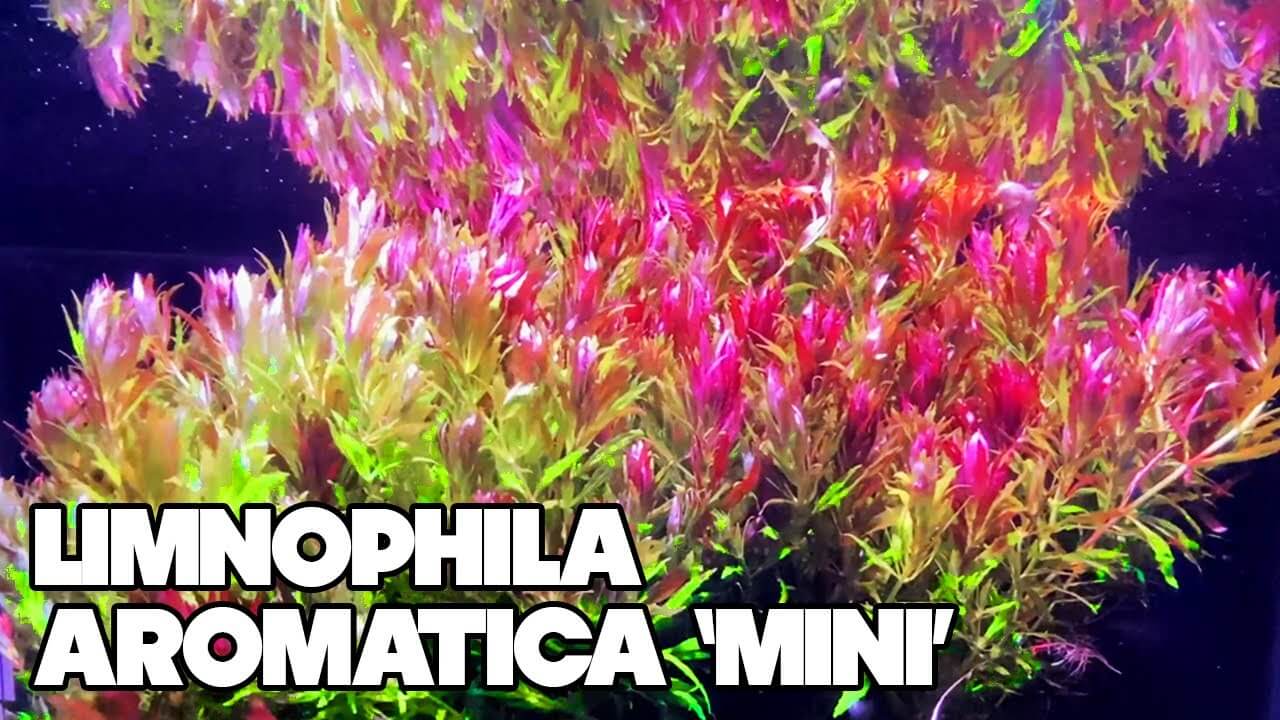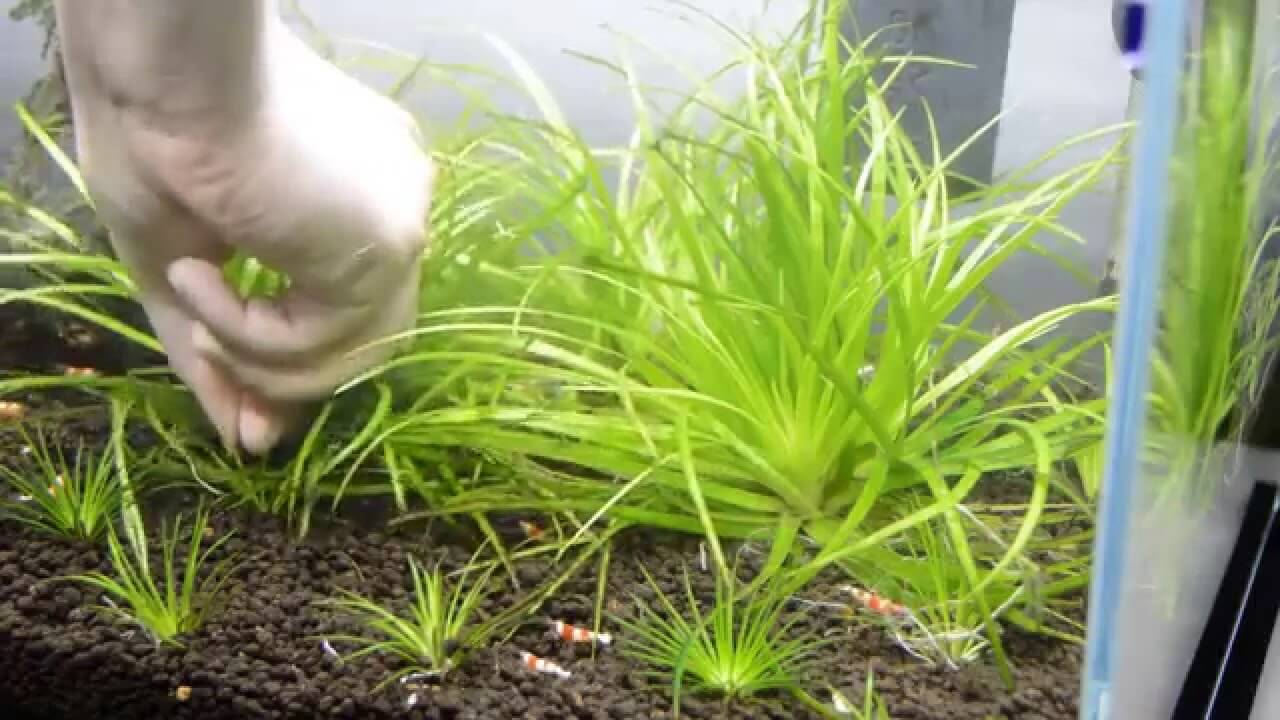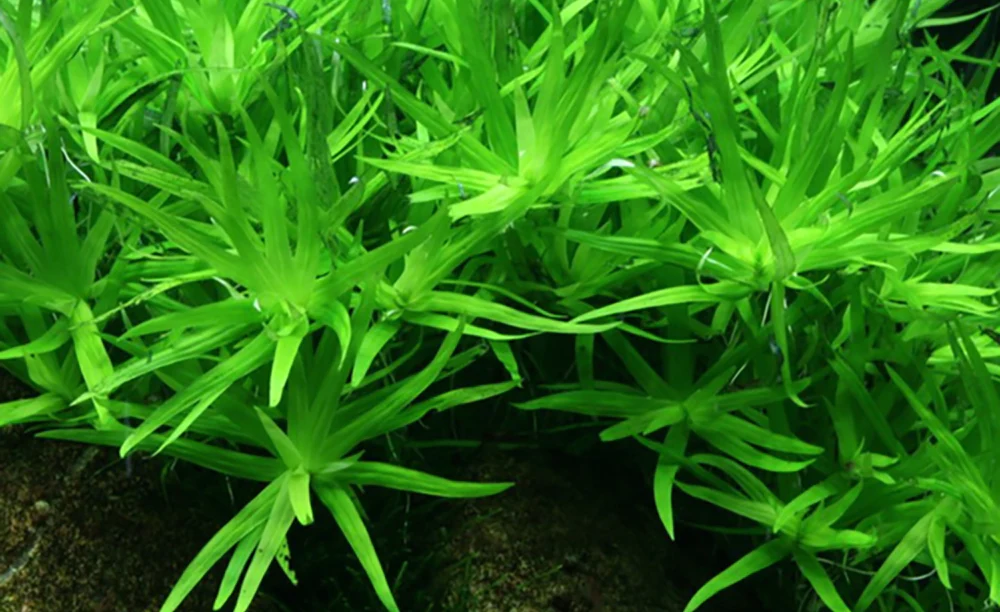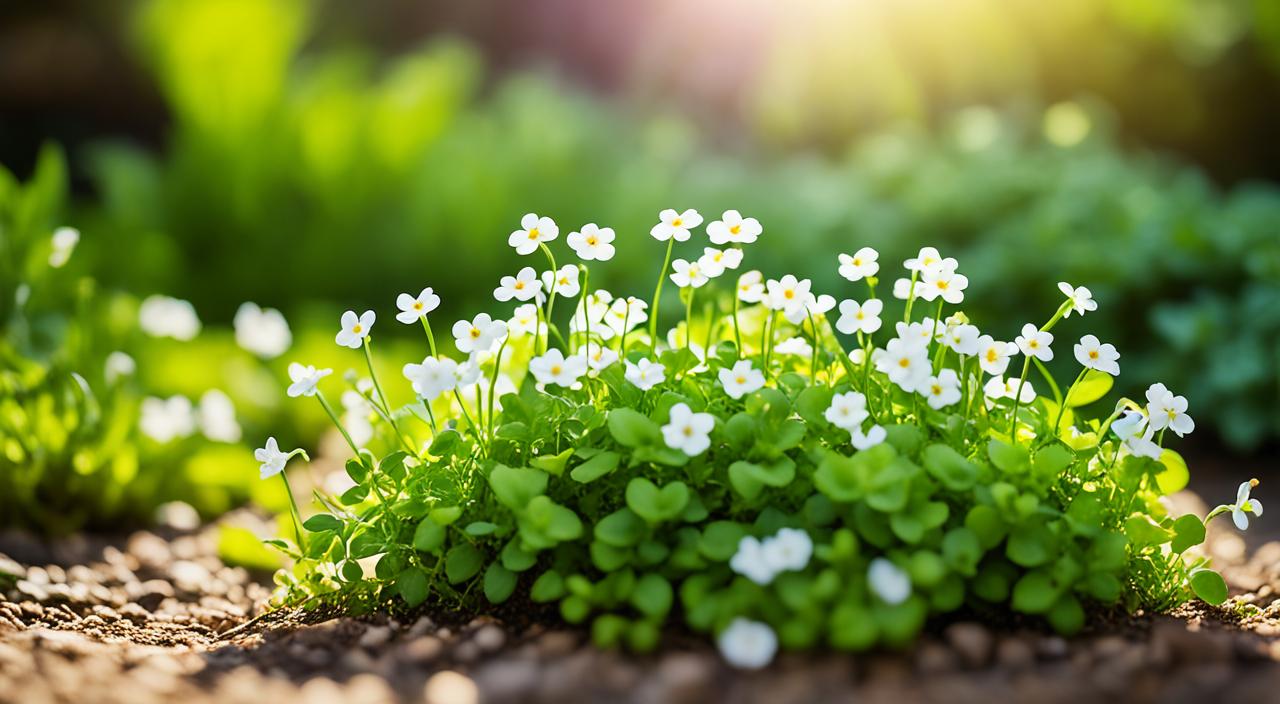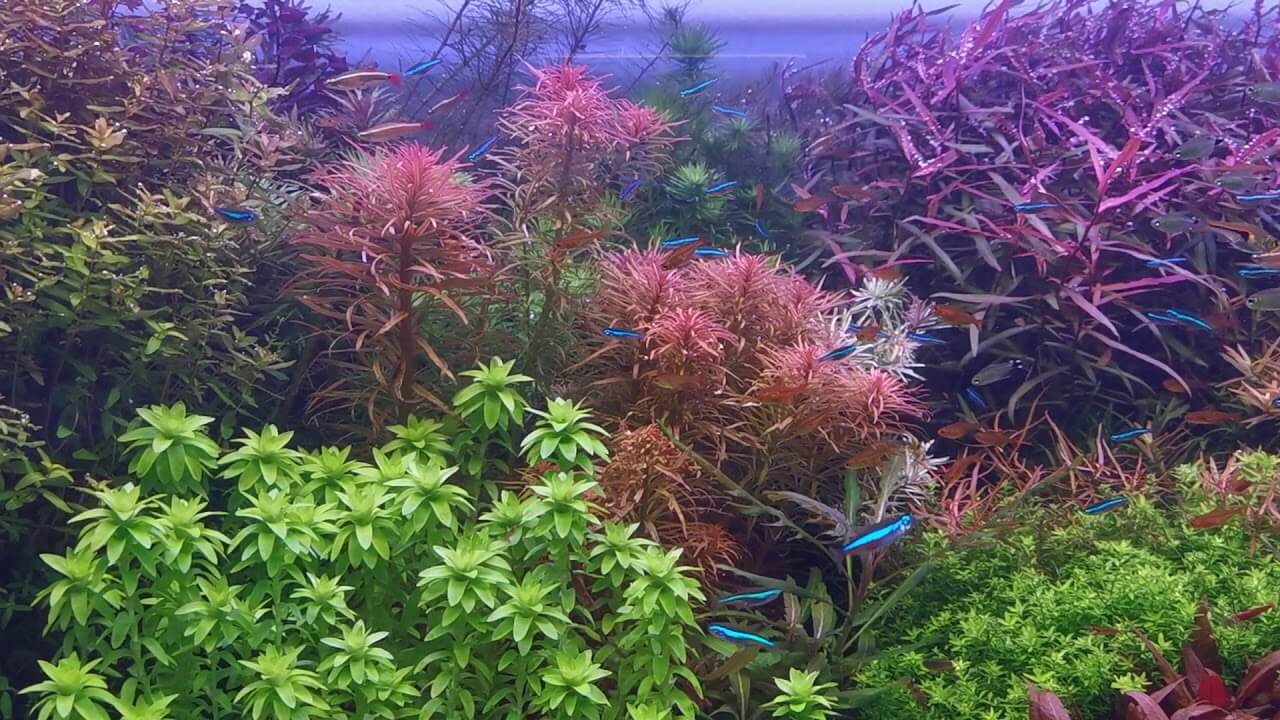Greetings, fellow aquarium enthusiasts! Today, I’m excited to introduce you to a stunning aquatic plant that will undoubtedly take your underwater world to the next level – Limnophila aromatica mini—also known as Limnophila sp. “Kalimantan Mini” this plant is highly sought after for its vibrant colours and fragrant aroma. Let’s dive into the world of Limnophila aromatica mini care and discover how to create a thriving aquatic environment.
Key Takeaways:
- Limnophila aromatica mini is a sought-after aquatic plant valued for its vibrant colours and fragrant aroma.
- Regular trimming and providing high light, CO2 supplementation, and nutrient-rich water can enhance the plant’s colouration.
- Limnophila aromatica mini is believed to originate from Kalimantan, the Indonesian part of Borneo island.
- The plant has small, thin leaves with a light green to brown-red colouration and visible stomata.
- It thrives in intense lighting and can coexist with small to medium-sized peaceful community fish.
Brief Overview Of Limnophila aromatica mini
Limnophila aromatica mini is a stunning aquarium plant that adds a touch of vibrancy and elegance to any aquascape. Its small, colourful leaves create a visually appealing contrast in the tank.
To maintain its vibrant colour, regular trimming is necessary. This helps to promote bushier growth and prevents the plant from becoming too leggy.
Limnophila Aromatica Mini Table:
| Row Names | Descriptions |
|---|---|
| 1. Scientific Name: | Limnophila aromatica ‘Mini’ |
| 2. Common Names: | Mini Limnophila Aromatica, Dwarf Limnophila |
| 3. Origin: | Southeast Asia |
| 4. Height: | Up to 30 cm (12 inches) in aquarium conditions |
| 5. Growth Rate: | Moderate to Fast |
| 6. Colour: | Bright green to pinkish or purplish under high light |
| 7. Aquarium Placement: | Midground to Background |
| 8. Water Type: | Freshwater |
| 9. pH: | 5.5 – 7.5 |
| 10. Care Level: | Moderate |
| 11. Light Requirements: | High; 50-70 PAR (Photosynthetically Active Radiation), 5000-7000 Kelvin, 30-50 LUX |
| 12. CO2 Requirements: | Recommended for optimal growth and color development |
| 13. Temperature: | 22-28°C (72-82°F) |
| 14. Flow Rate: | Moderate to High |
| 15. Propagation: | Stem cuttings |
| 16. Feed Type: | Liquid fertilizers, especially those rich in micronutrients |
Expanded Light Requirements:
- PAR (Photosynthetically Active Radiation): Limnophila aromatica ‘Mini’ thrives under high light conditions, requiring a PAR level of 50-70. This ensures vibrant colouration and healthy growth.
- LUX: For this plant, aiming for a light intensity of 30-50 LUX is beneficial, though it’s crucial to meet its PAR requirements for photosynthesis.
- Kelvin Scale: A colour temperature of 5000-7000 Kelvin is ideal, promoting growth and enhancing the plant’s natural colouration, making it more vibrant. Lights closer to the higher end of this range tend to bring out more of the pinkish or purplish hues in the plant.
Additionally, providing high light, adequate CO2 supplementation, and nutrient-rich water can enhance the plant’s colouration, resulting in a more vibrant and striking appearance.
Origins And Habitat
The exact origin of Limnophila aromatica mini is unknown. Still, it is believed to have been found in Kalimantan, the Indonesian part of Borneo island, as indicated by its trading name “Kalimantan Mini.” It is a dwarf form of Limnophila aromatica and is found in aquatic environments, such as swamps, marshes, and rivers, in Southeast Asia. Although uncommon in the aquarium trade, it has been cultivated and propagated for over a decade in Europe.
| Origin | Habitat |
|---|---|
| Unknown | Aquatic environments in Southeast Asia, including swamps, marshes, and rivers |
| The trading name “Kalimantan Mini” suggests its origin in Kalimantan, the Indonesian part of Borneo island. | Thrives in wetland areas with access to water |
Morphological Characteristics
The morphological characteristics of Limnophila aromatica mini are notable for their unique leaf structure. The plant features small, thin leaves growing in pairs or whorling along the stem. These submerged leaves typically measure between 1 and 2.5 cm in length and display a serrated edge. The colouration of the leaves ranges from light green to brown-red, creating an attractive contrast. The leaf midribs and stems retain a light green shade, further enhancing the plant’s visual appeal. Under favourable conditions, Limnophila aromatica mini can develop longer leaves, with up to six per whorl, reaching 3-5 cm lengths. The leaves also feature tiny silvery spots known as stomata.
To provide a visual representation of the morphological characteristics, take a look at the image below:
Placement And Lighting
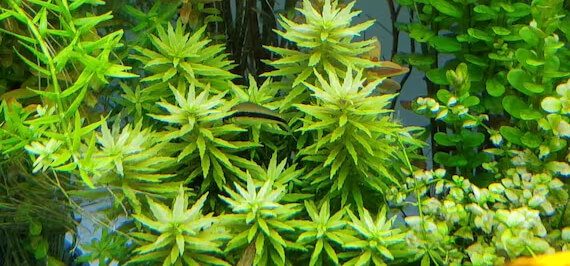
When placing Limnophila aromatica mini in your aquarium, it best suits the foreground to midground areas. This positioning allows the plant to stand out and showcase its striking appearance, adding depth and visual interest to your aquascape.
In terms of lighting, Limnophila aromatica mini thrives in intense lighting conditions. It is well-suited for high-light setups, where the bright illumination can help enhance the plant’s colouration and promote healthy growth. However, even with moderate lighting, this plant can still thrive and maintain its light green colour, making it a versatile choice for various aquarium setups.
Ensure that you provide suitable lighting conditions that meet the specific needs of Limnophila aromatica mini to ensure its optimal growth and aesthetic appeal.
What Are Good Tank Mates?
Limnophila aromatica mini is a peaceful plant that can coexist harmoniously with various fish species. When selecting tank mates for this plant, it is essential to consider their compatibility and behaviour. Good tank mates for Limnophila aromatica mini include small to medium-sized peaceful community fish. These fish species are generally calm and non-aggressive, making them suitable companions for this delicate plant.
Good Tank Mates
- Neon tetras
- Guppies
- Corydoras catfish
These fish species are known to be peaceful and can coexist well with Limnophila aromatica mini. They are less likely to uproot or damage the plant, allowing it to flourish in your aquarium. Moreover, their small size and peaceful nature make them suitable companions for this elegant aquatic plant.
Fish Species To Avoid
While many compatible tank mates exist for Limnophila aromatica mini, specific fish species should be avoided. Larger, aggressive fish species tend to uproot or damage plants, making them unsuitable companions for this delicate plant. Additionally, some fish species have a penchant for nibbling on plants, which may damage the fragile leaves of Limnophila aromatica mini.
Here are some fish species to avoid keeping with Limnophila aromatica mini:
- Cichlids
- Barbs (certain species)
These fish species have a higher likelihood of causing damage to the plant due to their aggressive nature or nibbling habits. It is crucial to choose tank mates who will appreciate and respect the beauty of Limnophila aromatica mini without causing harm to its delicate structure.
Feeding (Fertilization)
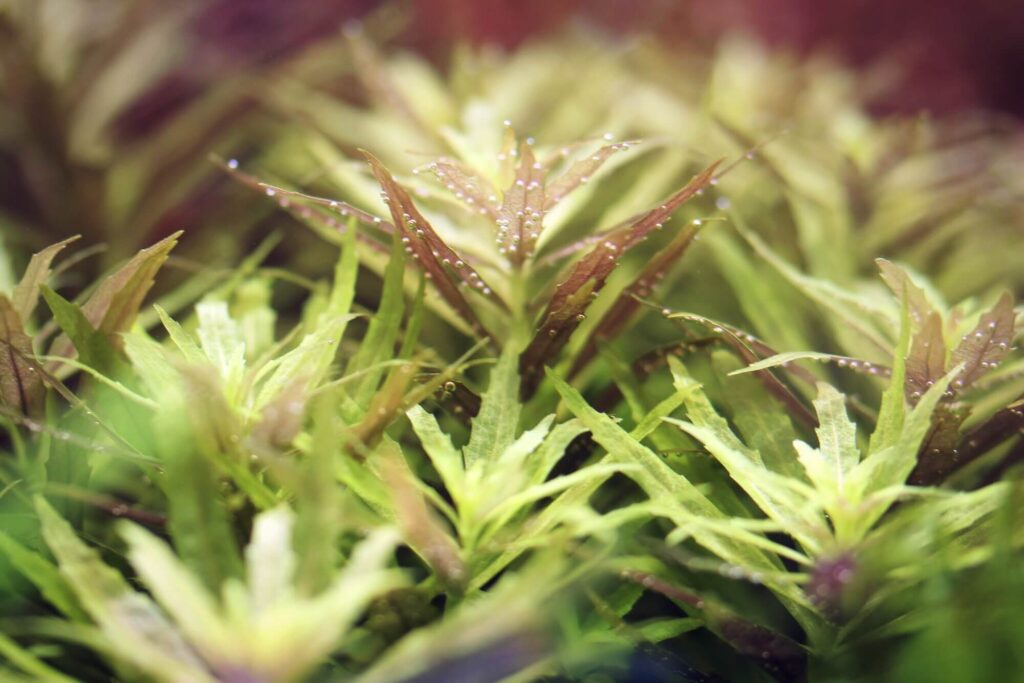
Limnophila aromatica mini, a fast-growing plant, requires regular fertilization to ensure optimum growth and health. Adding macro and micronutrients, along with a carbon source, is beneficial for this plant’s well-being. Liquid fertilizers formulated explicitly for aquarium plants containing essential nutrients like nitrogen, phosphorus, potassium, and trace elements can provide the necessary nutrition.
The dosage and frequency of fertilization may vary depending on the specific needs of your aquarium and the other plants present. It is recommended to follow the instructions provided by the fertilizer manufacturer for the best results. Proper fertilization will help maintain the vibrant colouration and robust growth of Limnophila aromatica mini.
To simplify nutrient management, you may consider using an aquarium fertilization schedule or a dosing system with a timer to ensure consistent and timely nutrient supplementation.
| Fertilizer | Dosage | Frequency |
|---|---|---|
| Aquarium Liquid Fertilizer A | 3 ml per 50 litres of water | Twice a week |
| Aquarium Liquid Fertilizer B | 1 ml per 50 litres of water | Once a week |
| Aquarium Liquid Carbon Supplement | 1 ml per 50 liters of water | Every other day |
Remember that these recommendations are general guidelines, and specific dosages may vary depending on your aquarium’s size, plant density, and nutrient demands. Regular monitoring of plant growth and visual cues can help fine-tune your fertilization routine for optimal results.
CO2 Injection
Types
CO2 supplementation is essential for the optimal growth and colouration of Limnophila aromatica mini. Adding carbon dioxide promotes healthy photosynthesis, leading to more robust growth and intensified colouration. There are various methods of CO2 injection available, each with its advantages and considerations. The choice of method depends on factors such as the size of your aquarium, budget, and personal preference.
Some of the commonly used types of CO2 injection methods include:
- CO2 Canisters: These pressurized canisters deliver a steady supply of carbon dioxide to the aquarium. They usually require a regulator and a diffuser or atomizer to distribute the CO2 into the water.
- Liquid Carbon Supplements: Liquid carbon supplements, such as glutaraldehyde-based products, provide an alternative to compressed CO2. These supplements are usually added directly to the aquarium and serve as a plant carbon source.
- CO2 Diffusers: CO2 diffusers help disperse carbon dioxide into the water in a fine mist. They enhance the dissolution of CO2 and ensure efficient distribution throughout the aquarium.
It is essential to consider your aquarium’s size and specific needs when selecting a CO2 injection method. Consulting with experienced aquarists or seeking professional advice can help you make an informed decision.
| CO2 Injection Method | Advantages | Considerations |
|---|---|---|
| CO2 Canisters | – Provides a steady supply of CO2 – Allows precise control of CO2 levels | – Initial setup cost – Regular refilling or replacement of the canister – Requires additional equipment |
| Liquid Carbon Supplements | – Easy to use, no additional equipment required – Can be cost-effective | – Some supplements may have an odor – Requires frequent dosing |
| CO2 Diffusers | – Ensures effective distribution of CO2 – Can enhance plant growth | – Diffuser may require cleaning and maintenance – May affect surface agitation |
Care
Planted Tank Parameters
Proper care is essential for the health and growth of Limnophila aromatica mini. To ensure its optimal development, it is necessary to create suitable planted tank parameters. The ideal temperature range for this plant is between 22 and 26 °C. Maintaining a stable temperature within this range will promote healthy growth and prevent stress. Additionally, providing soft to moderately hard water with a pH range of 6 to 7 will create a favourable environment for the plant to thrive.
Water Quality
Good water quality is crucial for the overall well-being of Limnophila aromatica mini. Maintaining a clean and well-maintained aquarium is essential to prevent the buildup of debris and organic matter that can negatively impact plant health. Adequate filtration is critical to remove pollutants and maintain water clarity. Regular water changes and a reliable filtration system will help ensure optimal water quality and provide the necessary nutrients for the plant’s growth.
Filtration
Adequate filtration is crucial for the health and vitality of Limnophila aromatica mini. A reliable filtration system will help to remove excess nutrients, debris, and harmful substances from the water, ensuring a clean and healthy environment for the plant. It is recommended to use a filtration system that provides mechanical, biological, and chemical filtration to secure the best water quality possible. Regular cleaning and maintenance of the filtration system will help to optimize its performance and promote a thriving aquatic environment.
Flow
Maintaining an appropriate water flow in the aquarium is vital for the growth and development of Limnophila aromatica mini. A moderate to strong water flow will help to distribute nutrients evenly throughout the tank, ensuring that all parts of the plant receive the necessary resources for growth. It will also help prevent the buildup of stagnant areas and promote water oxygenation. Consider using a circulation pump or adjusting the filter outlet’s positioning to achieve the plant’s desired water flow.
Aquarium Maintenance
Testing Water Conditions
Regular aquarium maintenance is crucial for the well-being of Limnophila aromatica mini. Testing the water conditions regularly is important to ensure that the parameters are within the required range for the plant’s growth. This includes monitoring the pH, temperature, and nutrient levels.
How To Set Up Your Aquarium Tank
When setting up your aquarium tank for Limnophila aromatica mini, there are a few key factors to consider. First, provide the necessary substrate to support the plant’s root system. A nutrient-rich substrate, such as aquatic soil or a specialized plant substrate, is recommended. Next, ensure that your tank has suitable lighting. Limnophila aromatica mini thrives in bright light conditions, providing adequate illumination for optimal growth. Finally, consider CO2 supplementation. Adding carbon dioxide to your aquarium can significantly benefit the growth and health of Limnophila aromatica mini. There are various methods of CO2 injection available, such as CO2 canisters or liquid carbon supplements, so choose the method that best suits your setup and preferences.
Propagation Methods
Propagation is essential to maintaining and expanding your Limnophila aromatica mini population. It can be achieved by taking cuttings from the plant’s main stem and replanting them in the substrate. Ensure that each cutting has several sets of leaves for successful growth. To encourage the development of roots, you can trim the stem’s lower portion and remove any leaves that will be submerged in the substrate. With proper care and favourable conditions, these cuttings will quickly grow into new plants, allowing you to create a lush and thriving aquarium filled with Limnophila aromatica mini.
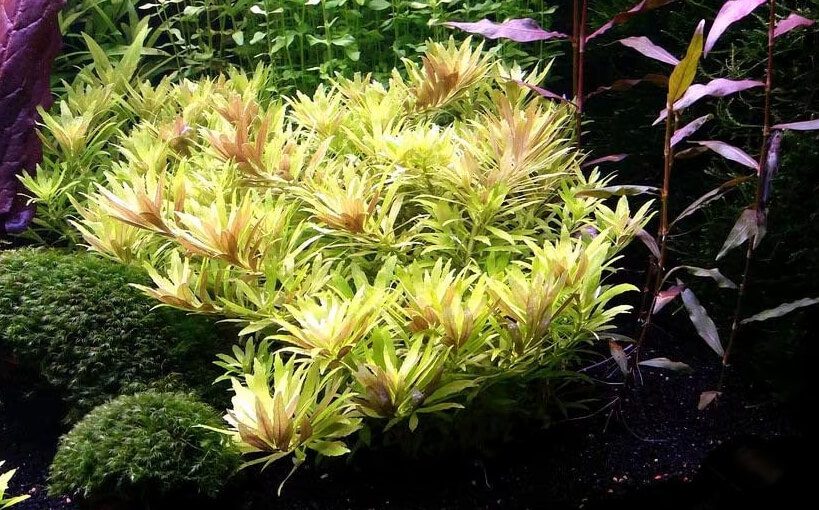
Health And Disease
Signs Of Good Health
Maintaining the health of Limnophila aromatica mini is essential to ensure its optimal growth and vibrant appearance. The signs of good health in this plant include:
- Vibrant colouration: Healthy plants exhibit rich, vibrant colours in their leaves.
- Robust growth: The plant should grow steadily and produce new leaves regularly.
- Healthy root development: A well-established root system indicates a healthy plant.
Signs Of Poor Health
It’s essential to be vigilant for signs of poor health in Limnophila aromatica mini. Common indicators of poor health include:
- Wilting or yellowing leaves: Wilted or yellow leaves may indicate nutrient deficiencies, improper lighting, or disease.
- Stunted growth: If the plant fails to grow or exhibits slow growth, it may indicate inadequate nutrients or environmental stress.
- Presence of algae or fungus: The appearance of algae or fungus on the leaves or substrate can indicate poor plant health and the need for intervention.
Common Health Issues And Treatment
Limnophila aromatica mini may encounter several health issues affecting its growth and overall well-being. Some common health issues and their treatments include:
| Health Issue | Treatment |
|---|---|
| Nutrient deficiencies | Supplement the necessary nutrients through fertilization or adjust the nutrient balance in the aquarium water. |
| CO2 imbalance | Ensure proper CO2 supplementation to maintain a balance beneficial for the plant’s photosynthesis and growth. |
| Pest infestations | Identify and treat pests such as snails, aphids, or algae. Consider using natural remedies or safe pesticides to control infestations. |
Plant Pests
Limnophila aromatica mini may be vulnerable to various pests impacting its health and vitality. Some common plant pests to watch out for include:
- Snails: Snails can chew on the leaves and damage the plant. Manual removal or introduction of snail-eating fish can help manage snail populations.
- Aphids: Aphids can feed on the plant’s sap and cause stunted growth. Introduce natural predators or use insecticidal soap to control aphid populations.
- Algae: Algae growth can compete with the plant for nutrients and light, hindering its development. Regular maintenance, such as water changes and algae control methods, can help prevent excessive algae growth.
Summary
Caring for Limnophila aromatica mini involves providing suitable lighting, CO2 supplementation, and regular fertilization. This beautiful and vibrant aquatic plant can add depth and colour to your aquarium, especially when placed in the foreground to midground. To ensure optimal growth and health, monitoring water parameters, maintaining water quality, and promptly addressing health issues are essential.
Limnophila aromatica mini can become a stunning centrepiece in your aquascape by providing optimal care and attention. Remember to monitor the lighting conditions and supplement with CO2 to enhance growth and colouration. Regular fertilization with the appropriate nutrients will ensure the plant receives the nutrition to thrive. Placing the plant in the right location within the tank will showcase its striking appearance and make it a focal point of your aquarium.
Also, maintaining proper water parameters, such as temperature and pH, is essential for plant health. Adequate filtration and water flow will help maintain good water quality and distribute nutrients throughout the tank. Regular testing of water conditions will allow you to make any necessary adjustments to provide the optimal environment for Limnophila aromatica mini.
In conclusion, with the proper care and attention, Limnophila aromatica mini can flourish in your aquarium, adding beauty and vibrancy to your aquascape. Following the key points highlighted in this article can create a healthy and thriving environment for this stunning aquatic plant.
FAQ
How do I care for Limnophila aromatica mini?
To care for Limnophila aromatica mini, provide it with high lighting, CO2 supplementation, and nutrient-rich water. Regular trimming is necessary to maintain its vibrant color. Avoid keeping aggressive fish species that may uproot or damage the plant. Fertilize regularly and monitor water parameters for optimal growth.
Where is Limnophila aromatica mini originally from?
The exact origin of Limnophila aromatica mini is unknown, but it is believed to have been found in Kalimantan, the Indonesian part of Borneo island.
What are the morphological characteristics of Limnophila aromatica mini?
Limnophila aromatica mini has small, thin leaves that grow in pairs or whorls along the stem. The submerged leaves are usually 1 to 2.5 cm long, with a serrated edge and light green to brown-red coloration. The leaf midribs and stems tend to remain light green, providing a contrasting appearance to the leaf surface. Under favorable conditions, the plant can develop longer leaves, up to 6 per whorl, reaching lengths of 3-5 cm. The stomata on the leaves appear as tiny silvery spots.
Where should I place Limnophila aromatica mini in my aquarium?
Limnophila aromatica mini is best placed in the foreground to midground of the aquarium to highlight its striking appearance.
What lighting conditions are suitable for Limnophila aromatica mini?
Limnophila aromatica mini thrives in intense lighting conditions, making it an ideal plant for high-light setups. However, it can still thrive with moderate lighting.
What are good tank mates for Limnophila aromatica mini?
Good tank mates for Limnophila aromatica mini include small to medium-sized peaceful community fish such as neon tetras, guppies, and corydoras catfish.
What fish species should I avoid keeping with Limnophila aromatica mini?
Avoid keeping larger, aggressive fish species that may uproot or damage the plant, such as cichlids or certain species of barbs. Additionally, be cautious with fish that are known to nibble on plants, as they may damage the delicate leaves of Limnophila aromatica mini.
How should I fertilize Limnophila aromatica mini?
Limnophila aromatica mini benefits from regular fertilization with macro and micronutrients. Liquid fertilizers specifically formulated for aquarium plants can be used to provide adequate nutrition. Follow the instructions provided by the fertilizer manufacturer for the best results.
How can I enhance the growth and coloration of Limnophila aromatica mini?
CO2 supplementation can greatly benefit the growth and coloration of Limnophila aromatica mini. The addition of carbon dioxide helps to promote healthy photosynthesis, resulting in more robust growth and intensified coloration.
What care parameters should I maintain for Limnophila aromatica mini in my planted tank?
Maintain a temperature range of 22 to 26 °C and soft to moderately hard water with a pH range of 6 to 7. Adequate filtration and moderate to strong water flow are important for maintaining good water quality and nutrient distribution.
How do I maintain my aquarium with Limnophila aromatica mini?
Regular testing of water conditions is important to ensure that the parameters are within the required range for the plant’s growth. Set up your aquarium tank with suitable substrate, lighting, and CO2 supplementation. Propagation can be achieved by taking cuttings from the main stem and replanting them in the substrate.
How do I monitor the health of Limnophila aromatica mini?
Signs of good health include vibrant coloration, robust growth, and healthy root development. Signs of poor health may include wilting or yellowing leaves, stunted growth, or the presence of algae or fungus. Common health issues that can affect this plant include nutrient deficiencies, CO2 imbalance, and pest infestations.
What is the summary of Limnophila aromatica mini care?
Limnophila aromatica mini is a stunning aquatic plant that requires high lighting, CO2 supplementation, and nutrient-rich water for optimal growth and coloration. Regular trimming and proper care parameters are essential for its health. It can be placed in the foreground to midground of the aquarium and has compatible tank mates. Fertilization and CO2 injection can enhance its growth. Regular aquarium maintenance and monitoring are crucial for maintaining its health.

